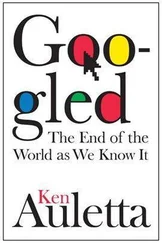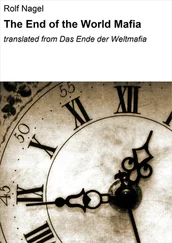The seven cities that John visited, however, were more notable for their political and cultural ambitions—and their mercantile accomplishments—than for their practices of pagan worship. Smyrna, for example, was an important seaport and a center of the wine trade, and its rich merchants supported a library, a stadium, and the largest public theater in Asia Minor. Pergamum, too, boasted of its library, and the name of the city is the root of the English word “parchment,” which was supposedly invented there. Ephesus hosted the gladiatorial games that provided a spectacular if also bloody form of popular entertainment. And, significantly, Thyatira quartered a great many of the guilds that figured so crucially in trade and commerce in the ancient world—the artisans and craftsmen, merchants and traders who were the makers and sellers of the beautiful and useful things that the Roman population found pleasurable or practical or both.
Nothing in the picture of the seven cities that is preserved outside the pages of Revelation suggests that they were “seats of Satan.” Rather, they appear to be places where ordinary men and women—Christians, Jews, and pagans alike—could and did lead prosperous, safe, pleasurable, and decent lives. But the picture is distorted when viewed through the eyes of true belief. For the author of Revelation, the unremarkable compromises that a man or woman might be willing to make in order to live the good life in a cosmopolitan city were just as sinful as the veneration of the Roman emperor or the offering of prayer to the many-breasted Diana. To him, as to religious fundamentalists in every age, from the Maccabees of the late biblical era to the strict and self-denying Jews, Christians, and Muslims in the modern world, the seeking and getting of the good things in life was something demonic.
Indeed, what really troubles John is the fact that the seven cities offered so many opportunities for Christians to embrace the Roman ways of life and rewarded them so richly for doing so. And nothing is more contemptible in his eyes than the simple and unremarkable act of buying and selling. Of all the satanic excesses that John condemns with such fury and disgust, he seems to regard commerce as the cardinal sin.
Perhaps the best evidence is found in the punishments that John envisions for the enemies of God in the end-times. John begins by introducing his readers and hearers to the “beast” who symbolizes Rome as the earthly agent of Satan. Anyone who “worships the beast and its image,” he insists, will be identifiable by “a mark on his forehead or on his hand”—a symbol, as we shall see, that can be best explained as a reference to the most fundamental tool of commerce, the coin of the realm. And then he warns that a special punishment is reserved for anyone who is so marked. 51
“He shall drink the wine of God’s wrath, poured unmixed into the cup of his anger, and he shall be tormented with fire and sulphur in the presence of holy angels and the presence of the Lamb,” says one of the angels who appear in John’s visions. “And the smoke of their torment goes up for ever and ever; and they have no rest, no day or night, these worshippers of the beast and its image, and whoever receives the mark of its name.” 52
Indeed, the very first sinners to be punished in the end-times will be those who bear the mark of the Beast. Seven angels will pour out seven vials containing “the wrath of God”—and the first vial poured by the first angel will cause “foul and evil sores” to come upon those “who bore the mark of the beast and worshiped its image.” 53And, at the end of the long ordeal that is described in such harrowing detail in Revelation, all of those who bear the mark of the Beast will be “cast alive in a lake of fire burning with brimstone.” 54
The mark of the Beast is apparently a name, presumably the name of a Roman emperor, or perhaps the numerical equivalent of the letters in his name. Elsewhere in Revelation, as we shall shortly see, John famously reduces the name of the Beast to the number 666, a kind of alphanumeric code that is possible only in languages (including both Hebrew and Greek) in which letters also serve as numbers. Here, too, is evidence of his Jewish roots: the extraction of mystical meanings from the biblical text by calculating and manipulating the numerical values of letters, a practice known as gematria, was favored by Jewish mystics. And John gives us an important and illuminating clue to what he has in mind about the thoroughly mundane function of “the mark of the beast”:
“[The beast] causes all, both small and great, both rich and poor, both free and slave, to be marked on the right hand or the head,” explains John, “ so that no one can buy or sell unless he has the mark, that is, the name of the beast or the number of its name.” 55
Buying and selling, as we have seen, were among the principal occupations of the seven cities where John preached, a source of wealth and the pleasurable things that wealth can bring. Wealth, of course, is measured in money. And the money in circulation throughout the Roman Empire was prominently marked with the name and image of the Roman emperor in whose reign it was minted. Some coinage, in fact, plainly identified the emperor with the Latin word divus or the Greek word theos, both of which mean “god.” 56Significantly, the Greek word in Revelation that is translated as “mark” is also “a technical term for the imperial stamp on commercial documents and for the royal impression on Roman coins.” 57When a coin crosses the palm of a Christian, John seems to say, he or she is marked by the Beast.
John is seldom content with using a word or a phrase to express just one thing, and the mark of the Beast fairly shimmers with deeper meanings. The Greek word for “mark,” for example, is also used to refer to the brand that was burned into the flesh of cattle to identify their owner. A few ancient sources suggest that slaves and soldiers were similarly branded (or tattooed) as a deterrent to escape or desertion. One source insists that prostitutes, too, were branded with the mark of the man who owned or employed them. And the third book of Maccabees recalls one hateful Egyptian pharaoh of the Hellenistic era who orders a few of his Jewish subjects to be branded with the figure of an ivy leaf, the mark of the god Dionysius. 58
Another ancient practice that might explain John’s curious reference is the mark that was applied to the forehead, neck, or hand of someone who had been granted membership in a craft or trade guild or initiated into the cult of a pagan deity. Since the guilds invoked the patronage of a god or goddess, membership in a guild and initiation into a cult may have been one and the same thing. And the marking of guild and cult members is explained as a conscious imitation of the branding of slaves: the initiate acknowledges his or her bondage to the deity “by indentures not written on pieces of parchment,” as first-century Jewish philosopher Philo puts it, “but, as is the custom of slaves, branded on their bodies with a red-hot iron.” 59
Still, the root meaning of “the mark of the beast” may be best understood as the names, numbers, and symbols that appeared on Roman coinage. For John, coinage is the ultimate and ubiquitous symbol of imperial authority graven in gold and silver—and a symbol, too, of the comforts and luxuries that some Christians buy at the price of their souls when they make the compromises that he so hotly condemns. To a culture warrior like John, a coin fashioned of gold or silver and bearing the profile of the emperor is an example of exactly what the God of Israel condemns in the Ten Commandments. Indeed, John’s fear and loathing of Roman coinage is yet another clue to his Jewish identity and yet another example of the Jewish values that suffuse the book of Revelation.
Читать дальше










